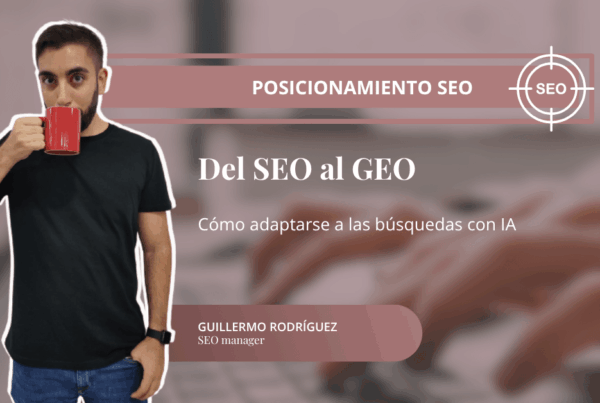Appearing in the top positions of search engines like Google is crucial for establishing your business online. If you already understand the importance of SEO and are wondering how to optimize your website and develop a good strategy, keep reading to discover how to do it.
What is website optimization?
Website optimization is a continuous process in the development and maintenance of a website. Its goal is to improve the user experience, increase traffic, and maximize the site’s effectiveness in terms of conversions and search engine performance. This process includes various practices and techniques designed to make a website more attractive, accessible, and functional for visitors.
Advantages of an optimized website
Optimizing your website not only improves its technical appearance but also serves as a key strategy for long-term success. Here are some of the most significant benefits:
Improved search engine rankings
A well-optimized site is more likely to achieve higher positions in search engine results, leading to greater visibility and an increase in organic traffic.
Faster loading speed
Optimized websites load faster, improving the user experience and reducing bounce rates. Increasing loading speed can keep users on your site longer, increasing conversion opportunities.
Enhanced user experience (UX)
Website optimization involves improving site navigation, ensuring that users can easily find what they are looking for. A responsive design ensures the site works well on all devices, from desktops to mobiles.
Higher conversion rates
An optimized site makes it easier for users to take desired actions, such as making a purchase or subscribing to a newsletter. Improving calls to action and ensuring that landing pages are attractive and relevant can significantly increase your conversion rates.
Increased credibility and trust
A professional and fast-loading website improves your brand image. Users are more likely to trust a business with a website that is updated, efficient, and easy to navigate.
How to Optimize Your Website Step by Step
To ensure that your website not only attracts visitors but also converts them into customers, it’s essential to carry out an effective website optimization strategy. Here’s a step-by-step guide on how to optimize your website:
Analyze your current website
Use tools like Google Analytics to analyze traffic, user behavior, and the most visited pages. Identify areas for improvement, such as slow loading times, high bounce rates, or low conversion rates.
Improve loading speed
Optimize image sizes, reduce the use of JavaScript and CSS that block rendering, and consider using a content delivery network (CDN) to speed up page loading.
Responsive design
Ensure your website is accessible and works well on all devices, especially mobiles. A responsive design improves the user experience and is crucial for SEO.
Content optimization
Ensure your texts are clear, well-written, and contain the relevant keywords for your target audience. Include effective calls to action (CTAs) to guide users through their buying process.
Strengthen site authority
Create high-quality inbound links by producing valuable content that other sites want to share and cite. Get involved in relevant communities and collaborate with influencers and blogs to establish connections that attract quality traffic to your page.
How to integrate SEO into website optimization?
SEO is a crucial part of website optimization. There are two main strategies in SEO:
On-Page SEO: Involves optimizing elements within your website, such as content, HTML tags, and site architecture, to improve its position in search engines.
Off-Page SEO: Involves activities outside your website, such as link building and social media promotion, to increase your site’s authority and relevance.
How to improve the optimization of audiovisual content?
In addition to written content, images and videos also play an important role in SEO. Here’s how to optimize them:
Optimizing images:
- Use descriptive filenames with relevant keywords.
- Include alt text with relevant keywords.
- Compress images to reduce loading time.
Optimizing videos:
- Write detailed and engaging descriptions for videos.
- Use eye-catching thumbnails to increase clicks.
- Host videos on platforms like YouTube to improve visibility.
Tools for website optimization
To optimize your website’s performance, it’s essential to use appropriate tools that help you identify problems and improvement opportunities. Here are some of the most effective ones:
- Google PageSpeed Insights: Evaluates the loading speed of your page and provides recommendations for improvement.
- GTmetrix: Provides a detailed analysis of your site’s speed and suggestions for improvement.
- Ahrefs: SEO tool that allows you to track keyword rankings and analyze the backlink profile.
- Yoast SEO: WordPress plugin that helps optimize content and improve on-page SEO.
- Google Analytics: Analyzes how users interact with your website, providing essential data for optimization.
- Hotjar: Provides heat maps and session recordings to better understand the user experience.
- Sucuri: Provides security services to protect your website from attacks and threats.



